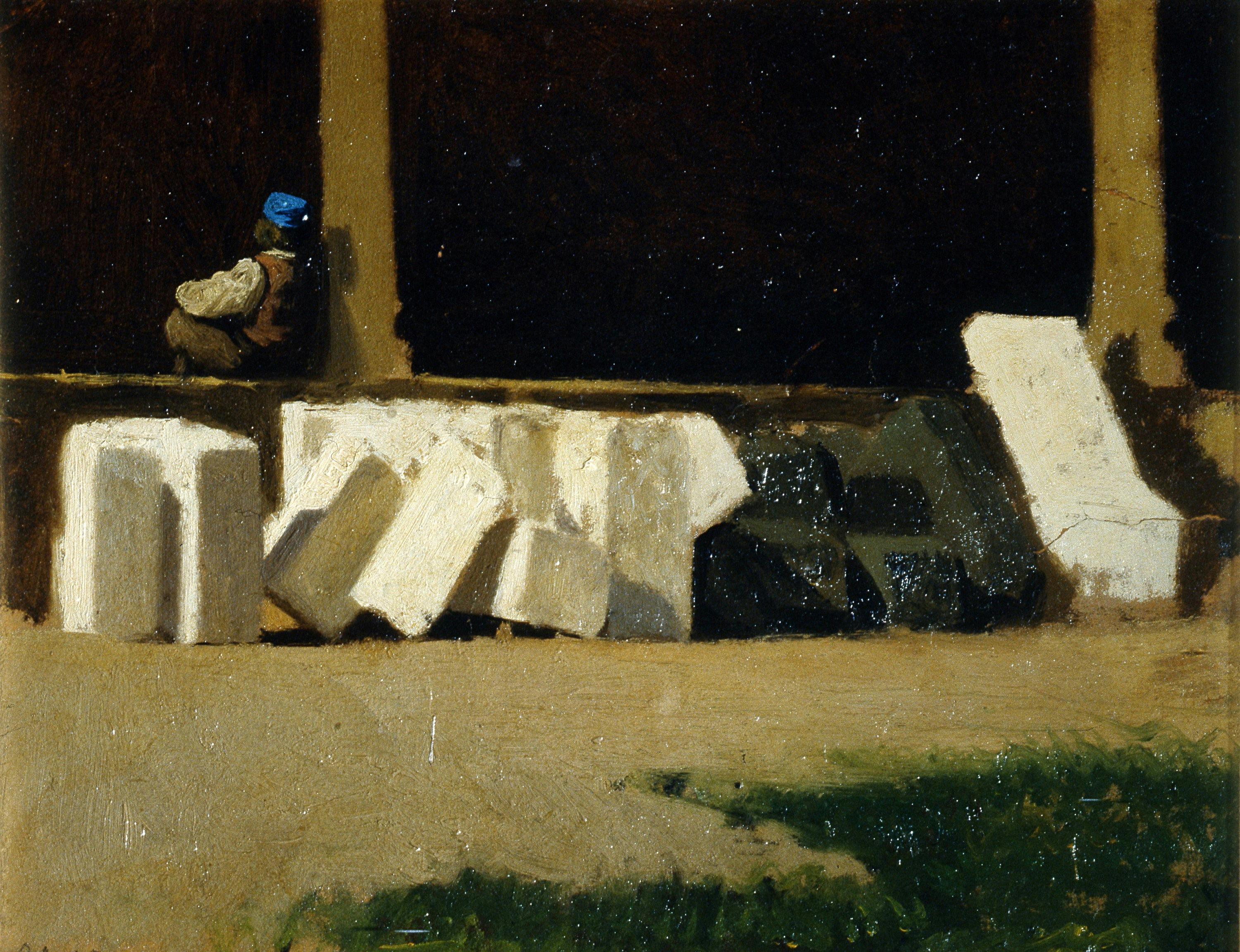The Cloister of Santa Croce
Abbati Giuseppe (Napoli 1836 – Firenze 1868)
An epitome of the so-called "Macchiaioli" painting's technique, this small piece of art was inspired by the nineteenth-century façade and courtyard works in the Church of Santa Croce in Florence. As his mentor and art critic Diego Martelli noted, Abbati, in 1861, “devoted himself to a serious study in the cloisters of Santa Croce Church where, during restoration works, large marble blocks in different colours were heaped thus offering the artist the opportunity to observe well-defined volumes as well as clear-cut and, I’d say, almost elementary contrasts of colours and chiaroscuro”. Indeed, the blocks of marble became an opportunity to investigate the ratios between shapes and sunlight through synthesis and geometry. The thick brushstrokes almost sculpted the shapes with no need to give them precise contours, placing them in a real and well-defined environment created through a perspective inspired by the 1400s masters who were highly praised and studied by the Macchiaioli painters.
Originally corresponding to the rather pejorative meaning of “stain”, the Italian term macchia first appeared in 1862 in an article of the “Gazzetta del Popolo” journal in reference to the technique used by the artists who, in around 1855, had undertaken an anti-academic revolution of Italian painting based on the direct observation of reality, the exploration of contemporary themes and the use of a more simplified painting style in which images were represented as though seen from a distance and depicted as shapes and lights without detailed elements.
